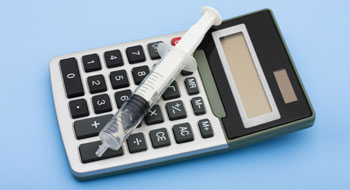

Canada’s healthcare expenses are continuing to rise but at a slower pace, according to a report from the Canadian Institute for Health Information (CIHI).
CIHI’s report, National Health Expenditure Trends, 1975 to 2013, shows that expenditures are expected to reach $211 billion in 2013 or roughly $6,000 per person.
Total health spending growth has slowed each year since 2011. It is expected to rise by 2.6% in 2013—less than half the average growth of 7% per year between 2000 and 2010.
“After a period of significant growth in the last decade, we’re starting to see things slow down,” says Christopher Kuchciak, CIHI’s manager of health expenditures. “Spending continues to increase across the board, but at a slower pace than in previous years. This trend is due in large part to Canada’s modest economic growth and government efforts to balance budgets.”
Canadians are expected to spend about $35 billion on medications in 2013, up 2.4% from 2012.
Over the last three years, both the public and private sectors have experienced less dramatic rates of growth in drug spending compared with the previous decade, resulting in a decline in drugs’ share of health spending.
This slower pace of growth is mainly attributed to a decline in the number of new drugs coming onto the market, the impact of generic pricing and patent expirations.
The pace of growth for hospital and physician services is also slowing. In 2013, spending on hospitals is expected to reach more than $62 billion (up 2.6% from last year) while spending on physicians is forecast at $31 billion (up 3.6% from last year).
The public sector pays for about 70% ($148 billion) of healthcare in Canada. The remaining 30% ($63 billion) comes from private sources such as health insurance and individuals’ out-of-pocket expenses. This split has been fairly consistent since 1997.
Related articles:
